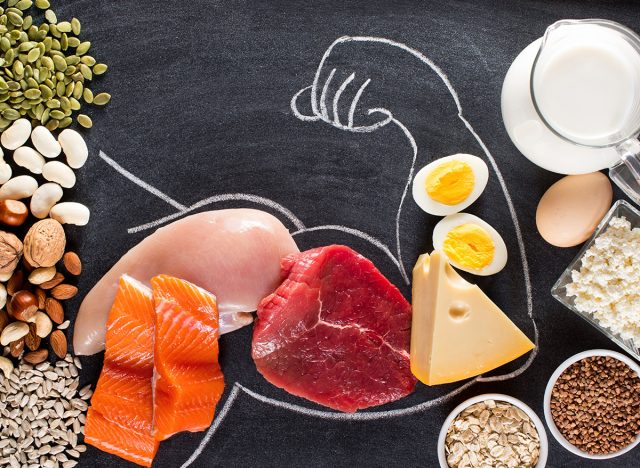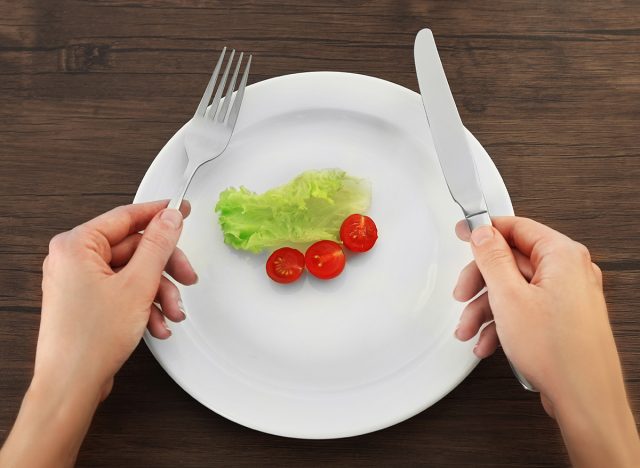5 Weight Loss Mistakes That Kept Me Fat
Are you trying to lose weight but aren't sure how? Dan Go, weight loss and fitness coach and founder of High Performance, successfully lost weight and is helping other people do the same. In a recent viral video, he reveals a few faux pas you might be making that are preventing you from losing weight. "Here are the five weight loss mistakes that have kept me fat and how to fix them," he says.
Losing Weight Can Be Frustrating

"Losing weight can be one of the most frustrating things that you do in your entire life. And a lot of people don't even know the hidden missteps that cause them to keep the weight on in the first place. And social media doesn't make this any easier. If you've ever been on social media, you have seen every single food on a planet being demonized in one way or the other," he says. "And you've also had people that simplify the process of weight loss by just telling you to eat less and move more, which is as helpful as telling someone who wants to make money to just earn more and spend less."
However, It's Probably Because You Are Making Mistakes

"The truth about losing weight is that you don't have bad genetics, you don't have a slow metabolism, nor are you too old," he says. "Instead, there are a few hidden mistakes that keep you from losing fat despite all of your hard work."
Mistake 1: Underestimating How Much Food Is Going Into Your Body

"Mistake number one is underestimating how much food was going into my body," he explains. "When I first started to lose weight, I was eating healthy, but then every time I would step on the scale, I would see the same number, and sometimes I would even see the weight scale go up. I thought my metabolism was getting slow and I was getting too old. Mind you, I was 30 years old at this time. The truth was I wasn't tracking my food properly."
Count Your Calories

"Now, one thing I need to mention is that calories are not all that matter, but they still do matter," he says, admitting that he didn't realize how many calories he was consuming even though he was eating healthy food. "Now, this doesn't mean that you have to track for the rest of your life, but you do want to get really exact about how much each food looks. And what I mean by that is, putting the raw versions of these foods on a weight scale, and you wanna be tracking it by the grams," he says. "Also, you'll be so surprised at what slips through the cracks in terms of the things that you snack on, the sauces that you use, and all other forms of just hidden calories that you're not even privy to in the first place."
Mistake 2: Putting Too Much Emphasis on Cardio and Running

"My next mistake is something that I see a lot of people doing, which is putting too much of an emphasis on cardio," he says. He says that he sees a lot of people running to lose weight. "One of the worst ways to lose weight is being in a calorie deficit and using running or cardio as your primary means of exercise," he says. "Yes, you are going to lose weight, but a significant portion of that weight is gonna be muscle as well."
Instead, Walk

Instead, he recommends walking 10,000 steps a day. Or, if you are running, you need to supplement with strength training.
Mistake 3: Not Eating Enough Protein

Mistake number three is not eating enough protein. He explains that when you do this, you might lose body fat and lean mass. "The reality is that when you lose lean mass along with body fat, what happens as a result is your metabolism goes down."
RELATED: The Ultimate Guide to Getting Fit as a Pear Body Type
Split Up Protein Intake Throughout the Day

"Protein is the single most important macronutrient when it comes to changing your body composition when it comes to losing weight," he notes. "When it comes to building a physique, a high protein intake reduces appetite and also balances a lot of weight-regulating hormones. Most importantly, it helps you keep, if not build, all of that hard-earned muscle. Now, in order to maintain muscle, if not build some muscle, you want to keep yourself at 0.8 to one gram per pound of body weight. And you wanna split this up between three to four meals a day. And this is gonna help you go from just losing weight to actually burning body fat."
Mistake 4: Taking Flexible Dieting Way Too Far

The fourth mistake is "taking flexible dieting way too far," he says. "In the fitness circles, you're going to see a lot of people saying that you need to keep your diet flexible in order to make this thing sustainable. And as long as calories are kept equal, you are going to lose weight regardless of the types of foods that you put into your body." While he agrees there are benefits, "it doesn't really work well for people who have legit food addictions to the point where they will eat junk food to the level of being in a food coma. It's like telling someone who has a legit food addiction towards chips that they can eat chips as part of their healthy lifestyle is like telling an alcoholic that they can have a shot at bourbon to keep things flexible."
Set Boundaries and Rules
"If there's anything that I know about addictions, I've dealt with it in my life. It's the fact that abstinence is one of the best tools when it comes to removing addiction from your life," he admits. "Now, this doesn't mean that your life has to be all about just eating whole foods and single-ingredient foods and all that kind of stuff. What this means is that you should have very hard and set boundaries and rules, especially if food addiction has been an issue in your life. Being flexible is cool when it comes to your diet, but also you have to understand your limits as well, especially if you have ever dealt with any type of food addiction."
RELATED: Top 20 Superfoods You Should Eat Every Day After Age 50
Mistake 5: Focusing Too Much on Weight Loss

"Now my final mistake, my fly in the face of everything that I just talked about, which is the concept of just focusing way too much on weight loss," he says. "Something I realized on my journey to get lean is the fact that I had no control over what the scale told me every single day that I stepped on it. I had no control over my inches. I had no control over these outcomes. The only thing I did have control over was the foods that I was putting into my mouth, the exercises that I was doing, the information that I was taking in to get myself to this place that I needed to be."
Instead, Focus on Your Healthy Lifestyle
"Something I realized is that the more you obsess about outcomes, the more you invite anxiety into your life. And this is because you're trying to control something that you just don't have any control over. My biggest win when it came to this whole getting in shape process was letting go of even trying to lose weight in the first place and putting the focus on the person that I was becoming and the lifestyle that I was creating," he admits. "So that weight loss or getting lean or burning body fat was just a byproduct of my behaviors and actions. And if you enjoyed this article, take advantage of these 15 Quick Ways to Lose Body Fat Percentage in a Week.





